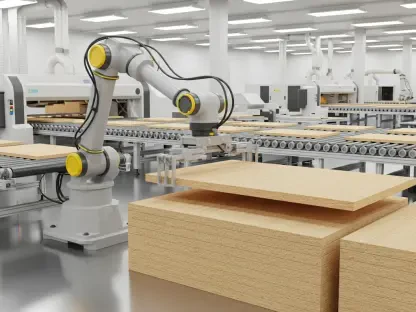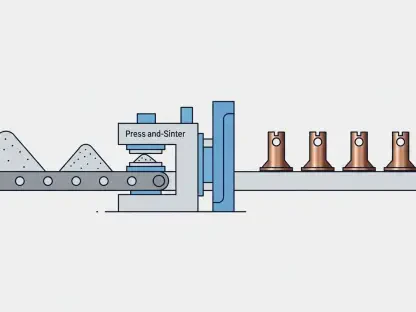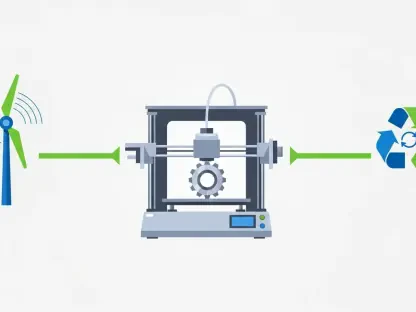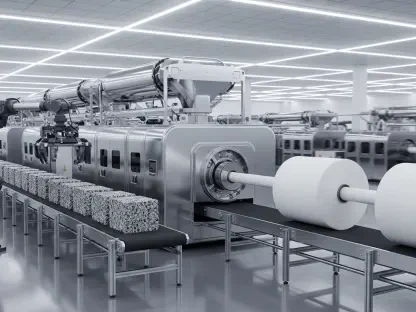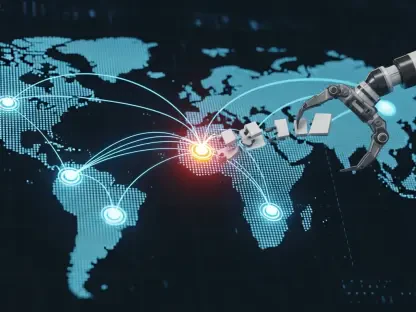Imagine a world where medical trainees can practice complex surgeries on models so lifelike that they mimic the exact texture and response of human organs, tailored to specific patient conditions. This is no longer a distant dream but a reality brought to life by 3D printing technology, which is fundamentally changing the landscape of medical education. Industry pioneers like Stratasys are leading the charge, creating anatomical models that surpass the limitations of traditional tools such as cadavers and plastic mannequins. These advanced models offer unmatched precision, enabling doctors and surgeons to prepare for real-world challenges with a level of detail previously unimaginable. Beyond individual training, this innovation delivers significant benefits to hospitals and healthcare systems by reducing costs and improving accessibility. As this technology continues to evolve, it promises to set a new standard for how medical professionals are trained, ultimately enhancing patient care across the globe.
Cutting-Edge Innovations in Anatomical Modeling
The remarkable realism of 3D-printed anatomical models owes much to groundbreaking technologies like the J850 Digital Anatomy printer developed by Stratasys. Utilizing PolyJet technology, this advanced system produces multi-colored, multi-material models in a single print, eliminating the need for post-production assembly or painting. Specialized materials such as BoneMatrix for replicating bone structures, GelMatrix for soft organs like kidneys, and TissueMatrix—known as the softest commercially available 3D printing material—closely imitate the feel and response of human tissues. This precision provides critical haptic feedback, allowing trainees to experience surgical conditions that closely resemble actual procedures. Such technological advancements ensure that medical education is no longer bound by the constraints of outdated methods, offering a hands-on learning environment that mirrors the complexities of the human body with stunning accuracy.
Furthermore, the ability to digitally store and reprint these models adds a layer of flexibility and efficiency to medical training programs. Unlike physical resources that degrade over time or require complex storage solutions, digital designs can be accessed and reproduced on demand, ensuring consistent quality across multiple training sessions. The integration of high-resolution printing with biomechanically accurate materials also supports the creation of radio-realistic phantoms for diagnostic imaging practice. This means that radiologists and other specialists can refine their skills using models that replicate the visual and tactile properties needed for accurate assessments. By bridging the gap between theoretical knowledge and practical application, these innovations are reshaping how medical professionals prepare for the diverse challenges they face in clinical settings, setting a foundation for improved outcomes.
Addressing Shortcomings of Conventional Methods
Traditional medical training tools, while historically significant, often fail to provide the specificity and realism needed for modern healthcare demands. Cadavers, for instance, are invaluable for understanding human anatomy, yet they rarely exhibit the exact pathologies or injuries that trainees must learn to address, and their tissue lacks the dynamic response of living bodies. Plastic mannequins, though more accessible, fall even further short in mimicking real human conditions. 3D printing steps in as a transformative solution by enabling the creation of fully customizable models that replicate specific medical scenarios, such as a particular bone fracture or a rare tumor. This targeted approach ensures that surgeons and doctors can rehearse procedures they are likely to encounter, enhancing their readiness for the operating room with a level of detail that was previously out of reach.
Moreover, the ethical and logistical challenges tied to traditional methods are substantial barriers that 3D printing helps overcome. Sourcing cadavers involves navigating complex regulations, high costs, and moral considerations, often limiting their availability to trainees. Animal models, another common alternative, raise similar ethical concerns and fail to fully replicate human physiology. In contrast, 3D-printed models offer a cruelty-free, highly accurate alternative that can be produced as needed without the associated dilemmas. This shift not only aligns with contemporary ethical standards but also democratizes access to high-quality training resources. Medical institutions in regions with limited access to cadavers can now provide their trainees with state-of-the-art tools, ensuring that geographic or financial constraints do not hinder the development of skilled healthcare professionals.
Boosting Trainee Skills and Standardization
For medical trainees, the advent of 3D-printed models marks a significant leap forward in skill development and preparedness. Unlike cadavers, which vary widely in anatomy and condition, leading to inconsistent learning experiences, these printed models can be replicated with identical specifications. This uniformity allows training programs to standardize education across multiple students or even different institutions, facilitating fair assessment and skill evaluation. Trainees can repeatedly practice on the same complex scenario—whether it’s a specific vascular anomaly or a challenging surgical repair—ensuring they master the necessary techniques before stepping into a real clinical environment. Such consistency in training materials is a game-changer, equipping future healthcare providers with the confidence and competence needed to excel under pressure.
Additionally, the customization offered by 3D printing caters to the individual learning needs of trainees, preparing them for the unique challenges of patient-specific care. By working on models designed to mirror exact conditions, such as a rare congenital defect or an intricate trauma case, medical students and residents gain hands-on experience that directly translates to real-world applications. This targeted practice reduces the learning curve when transitioning from classroom to clinic, minimizing errors and improving patient safety. The lifelike haptic feedback provided by advanced materials further enhances this training, allowing trainees to develop a nuanced understanding of tissue behavior during procedures. As a result, this technology not only sharpens technical skills but also fosters critical decision-making abilities, ensuring that the next generation of medical professionals is better equipped to handle the complexities of modern medicine.
Delivering Cost and Operational Benefits to Healthcare
Hospitals and healthcare systems stand to gain immensely from integrating 3D printing into their training frameworks, particularly from an economic and logistical standpoint. The traditional reliance on cadavers comes with prohibitive costs related to procurement, storage, and transportation—often involving international shipping due to scarcity and the need for specialized freezing facilities. These expenses strain already tight budgets, especially in regions grappling with rising demand for medical services. 3D printing offers a cost-effective alternative by producing reusable, on-demand models that drastically cut down on overhead costs. This financial relief allows institutions to redirect resources toward other critical areas, such as patient care or infrastructure improvements, without sacrificing the quality of professional development programs.
Beyond cost savings, the operational advantages of 3D-printed models are equally compelling. The ability to produce training tools in-house or through accessible partnerships eliminates delays caused by sourcing traditional materials, ensuring that training schedules remain uninterrupted. Furthermore, the enhanced realism and specificity of these models contribute to better-prepared medical staff, which in turn elevates the standard of care provided to patients. Hospitals investing in this technology can expect long-term benefits, as well-trained professionals are more likely to perform complex procedures with precision, reducing the risk of complications and associated costs. By alleviating logistical burdens and fostering a higher caliber of training, 3D printing proves to be a sustainable solution that aligns with the pressing need to optimize resources while maintaining excellence in healthcare delivery.
Paving the Path for Modern Medical Education
The shift toward technology-driven solutions in medical education is undeniable, with 3D printing emerging as a cornerstone of this evolution. This innovation directly addresses the growing demand for precision and specialization in healthcare, offering tools that traditional methods struggle to provide. Insights from industry experts, such as Arnaud Toutain from Stratasys, reinforce the view that additive manufacturing is not merely an auxiliary resource but a fundamental redefinition of training standards. By seamlessly integrating lifelike realism, customizable designs, and economic efficiency, 3D printing is poised to transform how medical professionals are educated, ensuring they are well-prepared to meet the challenges of an increasingly complex field. This trend signals a broader movement toward embracing advanced technologies to enhance learning outcomes across the healthcare sector.
Looking back, the adoption of 3D printing in medical training had already begun to show its profound impact by improving access to high-quality resources and fostering better patient outcomes through skilled practitioners. The next steps involved scaling this technology to reach more institutions, particularly in underserved areas, by encouraging partnerships between technology providers and healthcare educators. Investment in training for staff to maximize the use of these tools was also critical to ensure widespread benefits. Additionally, continued innovation in materials and printing techniques promised to push the boundaries of realism even further, offering new possibilities for specialized training. As the healthcare industry reflected on these advancements, it became evident that sustained collaboration and funding would be essential to fully realize the potential of additive manufacturing in shaping the future of medical education.




